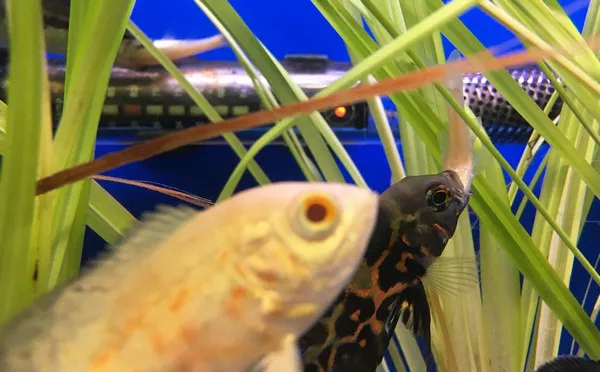Angelfish, with their majestic appearance and graceful movements, are a popular choice among aquarium enthusiasts. As responsible fish owners, it’s crucial to understand their dietary needs and feeding habits to ensure their health and well-being. One common question that arises is how long angelfish can go without food. In this article, we will explore the factors that influence their feeding requirements, discuss their ability to survive without food, and provide guidance for maintaining a healthy feeding routine.
Natural Diet and Feeding Patterns:
To determine how long angelfish can go without food, it is important to understand their natural diet and feeding patterns. In the wild, angelfish are omnivorous and feed on a variety of foods, including small invertebrates, insects, larvae, and plant matter. Their diet is primarily protein-based, with a preference for live or frozen foods.
Angelfish are known to be opportunistic feeders, capable of adapting to various conditions and adjusting their feeding behavior accordingly. In their natural habitat, they encounter periods of scarcity and abundance in food availability. As a result, they have developed the ability to tolerate short periods without food.
Metabolic Rate and Energy Storage:
The metabolic rate of angelfish plays a significant role in determining how long they can go without food. Metabolism is the process by which the body converts food into energy. Angelfish have a relatively slow metabolic rate compared to many other fish species. This means that they can conserve energy and sustain themselves for longer periods without regular feeding.
Additionally, angelfish have the ability to store energy reserves in the form of glycogen and fat. These reserves can be utilized during times of food scarcity. The duration for which angelfish can survive without food depends on factors such as their age, size, overall health, and the amount of energy reserves stored in their bodies.
Individual Variations:
It is important to note that the ability to go without food can vary among individual angelfish. Factors such as age, size, and overall health can influence their resilience to prolonged fasting. Juvenile angelfish, for example, have higher metabolic rates and faster growth rates, which generally necessitate more frequent feeding compared to adult angelfish.
Furthermore, individual angelfish may have different feeding behaviors and preferences. Some individuals may exhibit more robust appetites and require regular feeding, while others may be less voracious and tolerate longer periods between meals.
Recommended Feeding Schedule:
While angelfish can survive without food for a certain period, it is crucial to maintain a consistent and appropriate feeding schedule to promote their health and well-being. Regular feeding ensures that they receive essential nutrients and helps prevent malnutrition or weakened immune systems.
A general guideline for feeding angelfish is to provide small meals two to three times a day. This can include a mix of high-quality flakes, pellets, and frozen or live foods. It is important to feed them an amount that they can consume within a few minutes to avoid overfeeding and maintain water quality.
If you are unable to feed your angelfish for a brief period due to circumstances like travel or emergencies, they can typically tolerate going without food for up to a week. However, it is recommended to make necessary arrangements, such as automated feeders or seeking the assistance of a trusted caretaker, to ensure their feeding needs are met during your absence.
Conclusion:
Angelfish possess natural adaptations that allow them to survive periods without food. While they have the ability to tolerate fasting for short durations, it is essential to establish a regular feeding schedule to support their health and vitality. Consider their natural diet, metabolic rate, and individual variations when determining the appropriate feeding routine for your angelfish. By providing a balanced diet and consistent care, you will contribute to their overall well-being and enjoyment in your aquarium.
Recommended reading:


























